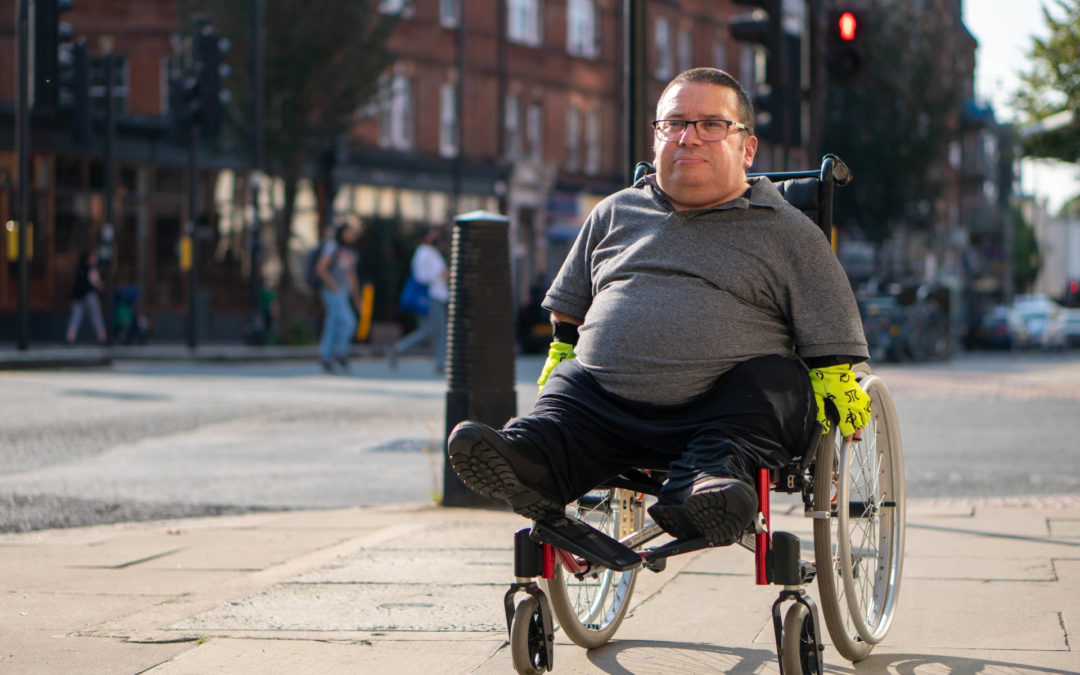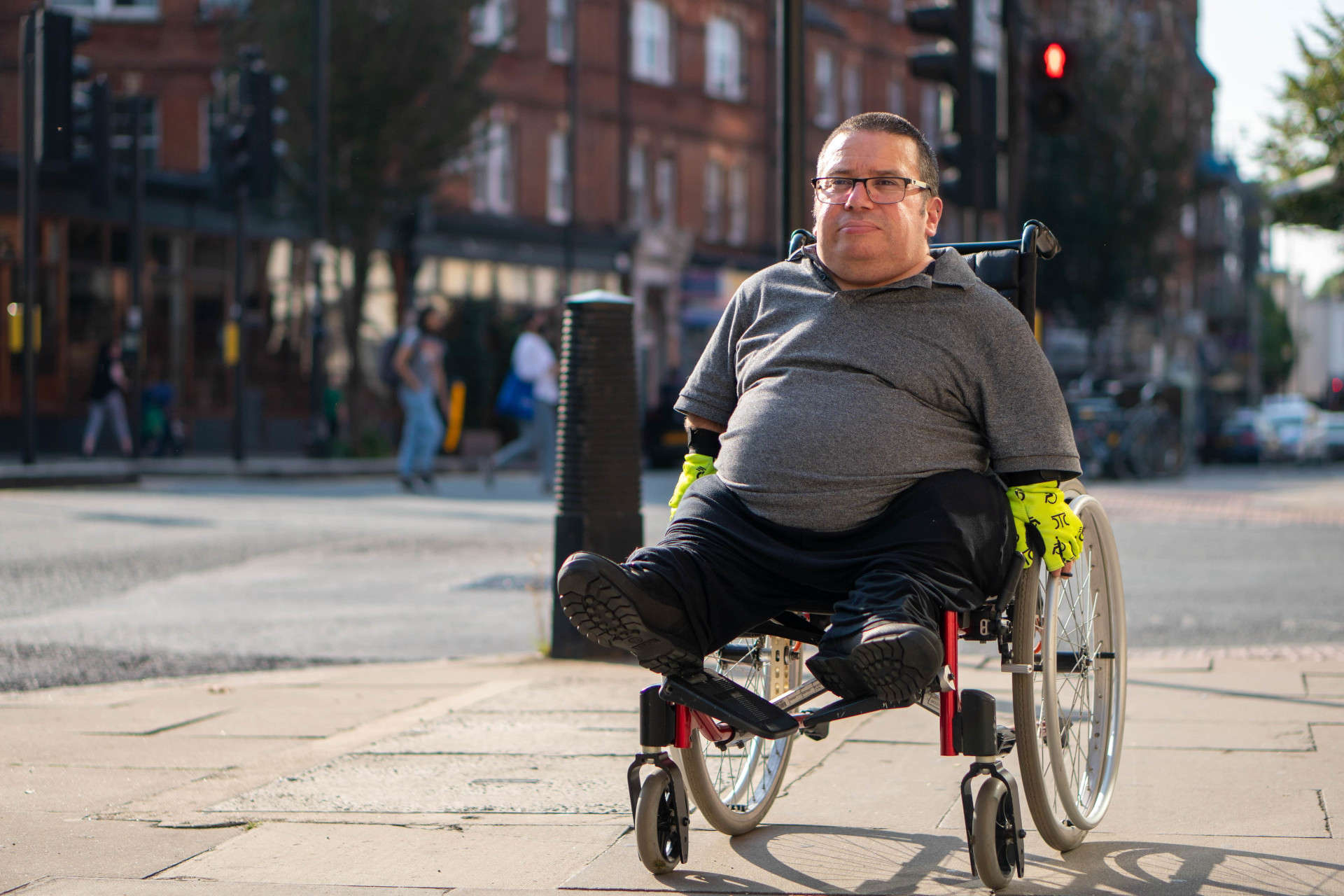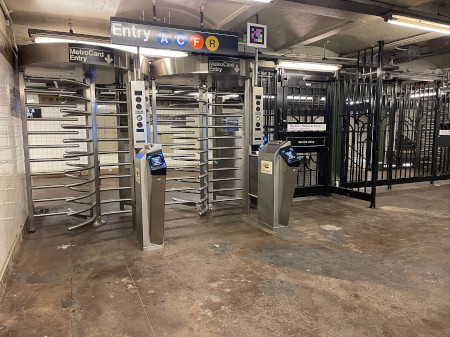Accessibility will have a new face at the Olympic and Paralympic Village in Greater Paris.

Paratransit Services for People with Disabilities: Yes You Can Reduce Their Costs

Paratransit Services for People with Disabilities: Yes You Can Reduce Their Costs
En tant que directeur général d’une société de transport, vous savez combien il est difficile de fournir un système de transport public fiable à tous les usagers. Et combien il est coûteux de mettre en place des services de transport adapté pour les personnes handicapées.
Mais vous pouvez réduire leurs coûts tout en maintenant un service de qualité pour tous les usagers. Comment ? Grâce à une application innovante capable de guider les personnes en situation de handicap au sein de votre réseau de transports en commun.
La technologie, combinée à des équipements physiques accessibles, peut apporter des changements significatifs dans la vie quotidienne des personnes handicapées. Vers une mobilité inclusive.
Après tout, les services de transport adapté n’ont été mis en place que pour permettre aux réseaux de transport en commun d’être plus accessibles. Et il semble que ce moment soit venu.
Attachez vos ceintures et découvrez ce que l’avenir des transports vous réserve. Vous verrez, cet avenir n’est pas si lointain…
Quelle solution peut être plus rentable que les services de transport adapté ?
Jetons un œil aux technologies innovantes, plus précisément à une application de navigation intérieure conçue pour les personnes en situation de handicap : Evelity .
Une application unique qui peut aider les usagers handicapés à naviguer dans votre système de transport en commun en toute autonomie :
⊗ Evelity est conçu pour s’adapter à chaque type de profil :
⊗ Un utilisateur aveugle ou malvoyant dispose d’instructions audio grâce à VoiceOver et TalkBack.
⊗ Un utilisateur sourd ou malentendant dispose d’instructions textuelles.
⊗ Une personne à mobilité réduite comme un utilisateur de fauteuil roulant bénéficie d’itinéraires optimisés et sans marches.
⊗ Une personne ayant une déficience intellectuelle dispose d’interfaces simplifiées.
⊗ Il offre plus d’autonomie aux usagers en situation de handicap : il leur suffit d’utiliser leur smartphone pour être guidés au sein de votre réseau de transport en commun. 84 % d’entre eux utilisent un smartphone au quotidien.
⊗ Ils bénéficient également d’une plus grande spontanéité, ce qui est impossible avec le transport adapté, car ils doivent réserver leur trajet au moins 48 heures à l’avance. Grâce à une application, fini le transport à la demande ! Ils peuvent utiliser les transports en commun comme tout le monde.
Mais pourquoi cela vaut-il la peine pour vous ?
⊗ L’augmentation du nombre de passagers handicapés dans votre métro ou votre bus signifie une réduction du nombre de services de transport adapté à gérer. Par conséquent, le simple fait de rendre Evelity accessible à vos usagers réduit les coûts liés à ces services.
⊗ Moins d’émissions de carbone : plus de personnes utilisent les transports en commun, moins de véhicules de transport adapté circulent sur les routes. C’est vraiment bon pour l’environnement.
⊗ Vous avez un impact positif sur la vie des gens : grâce à un transport en commun plus accessible, les personnes handicapées bénéficient des mêmes choix que les autres usagers. Elles peuvent choisir de se rendre au travail en bus ou en métro. Elles peuvent se déplacer avec plus de liberté.
⊗ Vous pouvez favoriser l’inclusion : vous donnez à votre système de transport public un caractère universel. Tous sont les bienvenus, quelles que soient leurs capacités.
⊗ Vous pouvez améliorer un service existant, et pas seulement pour les usagers en situation de handicap. Evelity ne leur est pas réservé. Les personnes âgées, qui peuvent se sentir anxieuses dans un environnement complexe, les touristes qui ne parlent pas la langue, les personnes qui n’ont jamais utilisé votre métro…
Evelity est actuellement testé à la station de métro JaySt-MetroTech de New York. La MTA s’engage à offrir un réseau de métro accessible et inclusif. Elle a parfaitement compris qu’améliorer la mobilité des personnes handicapées dans son métro est essentiel pour améliorer leur expérience et leur qualité de vie.
L’application de navigation est désormais pleinement déployée sur l’ensemble du réseau de métro de Marseille, en France. C’est le premier réseau de métro à miser sur cette solution innovante. Une technologie centrée sur les usagers pour mieux répondre à leurs besoins.
Que devez-vous mettre en œuvre pour Evelity afin d’améliorer l’accessibilité de votre réseau de transport en commun ?
Connaissez-vous le terme « phygital » ? Les mots « physique » et « numérique » se conjuguent pour combiner les deux mondes.
Le phygital peut être considéré comme un pont reliant la technologie et les équipements physiques. L’objectif est d’offrir aux utilisateurs une expérience unique et interactive.
Comme vous l’aurez deviné, Evelity représente le monde numérique. C’est une application qui guide les usagers en situation de handicap. Mais pour que cette application soit utilisable, vos stations de métro ou arrêts de bus doivent être accessibles.
C’est là que se trouvent les équipements physiques accessibles. Les personnes handicapées doivent compter sur des rampes d’accès, des chemins de guidage et des balises sonores pour localiser l’entrée du métro…
L’accessibilité physique complète la technologie. Phygital offre le meilleur des deux mondes. C’est ainsi que votre réseau de transport en commun peut être accessible. En effet, s’il est plus accessible, les personnes handicapées n’auront plus besoin d’utiliser les services de transport adapté. Et, à terme, les coûts qui y sont liés seront réduits.
Combien coûtent les services de transport adapté ?
Selon la Base de données nationale sur les transports en commun (NTD), les opérateurs de transport dépensent 5 $ pour un trajet en bus à itinéraire fixe. Pour les services de transport adapté, le coût varie de 60 $ à 90 $.
Au fil des ans, les coûts des services de transport adapté n’ont cessé d’augmenter en raison du vieillissement de la population.
En effet, le coût moyen par déplacement en transport adapté a augmenté de 20 % entre 2015 et 2018. Cela représente des dizaines de millions pour les sociétés de transport, ce qui signifie qu’une part importante de leur budget est consacrée à garantir aux usagers des services de transport adapté.
Mais le problème est que cet argent n’est pas destiné à résoudre les problèmes d’accessibilité des transports publics. Il sert plutôt à maintenir un service créé pour être temporaire.
Pourquoi les services de transport adapté sont-ils si coûteux ?
⊗ Les opérations quotidiennes des services de transport adapté sont extrêmement coûteuses pour les autorités organisatrices de transport : l’essence des véhicules, les véhicules eux-mêmes et leur entretien, les salaires des conducteurs…
⊗ Les services de transport adapté privilégient les déplacements individuels plutôt que collectifs. Ils ne peuvent pas regrouper efficacement les déplacements, sinon les personnes handicapées devraient attendre trop longtemps et manquer leurs rendez-vous.
⊗ Selon la zone à couvrir, un seul trajet peut être coûteux car il est difficile de transporter plusieurs passagers dans un véhicule.
⊗ Les personnes gravement handicapées peuvent avoir besoin de plus de temps pour monter et descendre du véhicule, ce qui affecte la productivité des véhicules de transport adapté.
Pourquoi votre réseau de transport en commun a-t-il besoin d’un tel service en premier lieu ?
Lors de son adoption, l’ADA a également mis l’accent sur les transports publics. Cela signifie que les transports publics doivent offrir aux personnes handicapées un réseau accessible leur permettant de se déplacer facilement : une chaîne de mobilité fluide .
Tout comme Rome ne s’est pas faite en un jour, il en va de même pour l’accessibilité des transports en commun aux personnes handicapées. Après tout, nous savons qu’il n’est pas simple d’assurer l’accessibilité d’un métro. Les rénovations nécessaires à un système très ancien et aux stations tentaculaires peuvent être colossales.
C’est pourquoi l’ADA a établi des exigences pour les services de paratransit : ils ont lieu dans un rayon de ¾ mile de tous les itinéraires fixes de transport en commun pour les personnes qui ne peuvent pas utiliser le système de bus public ou pour celles qui ne peuvent pas se rendre à un point où elles pourraient y accéder.
Mais l’objectif ultime est de disposer d’un système de transports en commun entièrement accessible à la population vieillissante et aux 61 millions de personnes handicapées aux États-Unis, afin qu’elles puissent se déplacer en ville. C’est d’autant plus frappant quand on pense aux 45 % d’Américains qui n’ont pas accès aux transports en commun.
C’est pourquoi une application de navigation comme Evelity, associée à un équipement accessible, peut s’avérer utile. Grâce à elle, votre réseau de transports en commun est plus accessible et inclusif pour tous.
Les personnes handicapées sont prêtes à utiliser la technologie pour améliorer leur mobilité. Vous pouvez concrétiser ce souhait en mettant en place une application de navigation intérieure adaptée à leur profil. Les services de transport adapté peuvent être considérablement réduits, tout comme leurs coûts. La question est désormais : êtes-vous prêt pour une mobilité plus inclusive ?
Vous souhaitez en savoir plus sur les transports publics accessibles ? Consultez ces articles :
MBTA : un modèle mondial de transport public accessible
Le métro de Montréal en route vers l’accessibilité universelle
Comment les centres de transit multimodaux peuvent-ils être accessibles aux personnes handicapées ?
Publié le 21 octobre 2022
Homme en fauteuil roulant : © Unsplash
Station de métro JaySt-MetroTech : © Okeenea
media

But the ultimate goal is to have a fully accessible public transit system for the aging population and the 61 million people with disabilities in the United States to navigate in their city. This is even more striking when we think about the 45% of Americans who have no access to public transportation.
writer

Carole Martinez
Content Manager & Copywriter
stay updated
Get the latest news about accessibility and the Smart City.
other articles for you

Open Data Is Key to Fostering Universal Accessibility
Open data represents an opportunity for cities to reach universal accessibility. It shows the missing links of the mobility chain.
Our Audio Beacons Guide the Blind and Visually Impaired at the Helsinki Subway
The Helsinky subway improved their audio signage system by installing on demand and remotely activated audio beacons.
7 Good Reasons to Install Audio Beacons at Your Public Transport Network
Audio beacons are an efficient way to provide more autonomy to blind and visually impaired people. They can easily use public transport.

Will Remote Activation Become the Norm for Accessible Pedestrian Signals?
More and more cities like New York have been exploring remote activation to trigger accessible pedestrian signals.
share our article!
more articles

Disability Statistics in the US: Looking Beyond Figures for an Accessible and Inclusive Society
Disability Statistics in the US: Looking Beyond Figures for an Accessible and Inclusive Society Around 61 million adults in the United States live with a disability. Diving into disability statistics in the US will help us know exactly who is concerned and what...
Our Audio Beacons Guide the Blind and Visually Impaired at the Helsinki Subway
Our Audio Beacons Guide the Blind and Visually Impaired at the Helsinki SubwayOur audio beacons equip the new line of the Helsinki subway in Finland. They help blind and visually impaired people locate the points of interest of a station. For users with visual...

Will Remote Activation Become the Norm for Accessible Pedestrian Signals?
Will Remote Activation Become the Norm for Accessible Pedestrian Signals?Without pushbutton, there are no accessible pedestrian signals. That’s how APS work in the U.S. But more and more cities have been exploring remote activation like New York City. The Department...

Hearing Impaired People: a Multitude of Profiles for Different Needs
Hearing Impaired People: a Multitude of Profiles for Different Needs Did you know that hearing impaired people have several profiles and that the way they identify themselves is important? You may be familiar with deaf and hard of hearing people but for each of...
NEVER miss the latest news about the Smart City.
Sign up now for our newsletter.
Unsubscribe in one click. The information collected is confidential and kept safe.
powered by okeenea
The French leading company
on the accessibility market.
For more than 25 years, we have been developing architectural access solutions for buildings and streets. Everyday, we rethink today’s cities to transform them in smart cities accessible to everyone.
By creating solutions ever more tailored to the needs of people with disabilities, we push the limits, constantly improve the urban life and make the cities more enjoyable for the growing majority.



Recent Comments